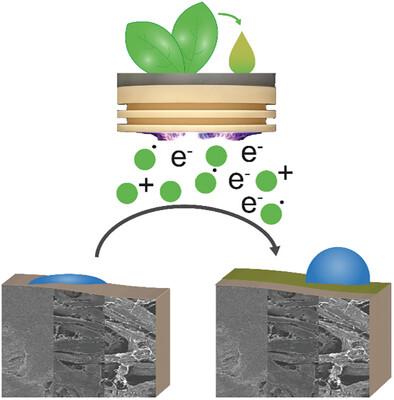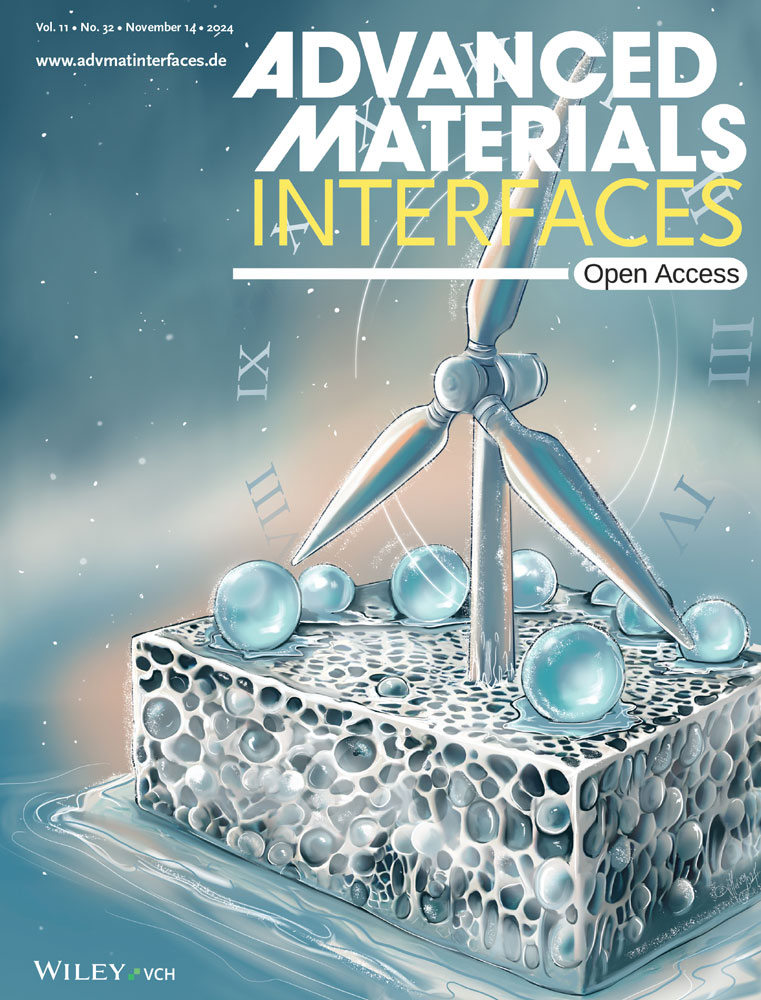Plasma Polymerization of Vegetable Oils onto Paper Substrates of Varying Porosity for Improved Hydrophobicity
IF 4.3
3区 材料科学
Q2 CHEMISTRY, MULTIDISCIPLINARY
引用次数: 0
Abstract
Paper finishing, in particular, coating paper with desired barrier functions is well‐developed as of today. However, due to large amounts of material and process energy as well as the use of non‐renewable resources for such coatings, common technologies are not sustainable. Given the increasing importance of paper in manifold applications, more sustainable routes with low‐energy processes as well as biogenic material alternatives are highly needed. To address this challenge, a solvent‐free and material‐efficient approach is proposed to bio‐based paper coatings by depositing chia oil‐based plasma polymers using a jet‐induced sliding discharge concept at atmospheric pressure. Depending on the amount of coating and the paper porosity, this treatment retards water absorption. Coating visualization is enabled through confocal laser scanning microscopy (CLSM) and scanning electron microscopy (SEM). Like chia oil, safflower oil, and olive oil show the ability to hydrophobize paper and the great potential within plasma polymerized vegetable oils to make the paper coating more sustainable.

将植物油等离子聚合到不同孔隙率的纸基材上以提高疏水性
纸张涂饰,特别是在纸张上涂布所需的阻隔功能,在今天已经得到了很好的发展。然而,由于此类涂层需要耗费大量的材料和工艺能源,并使用不可再生资源,因此普通技术不具有可持续性。鉴于纸张在多种应用中的重要性与日俱增,因此亟需采用低能耗工艺和生物材料替代品等更具可持续性的方法。为了应对这一挑战,我们提出了一种无溶剂、材料效率高的生物基纸涂层方法,即在大气压力下利用喷射诱导滑动放电概念沉积奇异油基等离子聚合物。根据涂层量和纸张孔隙率的不同,这种处理方法可延缓吸水。涂层可通过共焦激光扫描显微镜(CLSM)和扫描电子显微镜(SEM)进行观察。结果表明,奇异果油、红花油和橄榄油具有使纸张疏水的能力,等离子聚合植物油具有使纸张涂层更具可持续性的巨大潜力。
本文章由计算机程序翻译,如有差异,请以英文原文为准。
求助全文
约1分钟内获得全文
求助全文
来源期刊

Advanced Materials Interfaces
CHEMISTRY, MULTIDISCIPLINARY-MATERIALS SCIENCE, MULTIDISCIPLINARY
CiteScore
8.40
自引率
5.60%
发文量
1174
审稿时长
1.3 months
期刊介绍:
Advanced Materials Interfaces publishes top-level research on interface technologies and effects. Considering any interface formed between solids, liquids, and gases, the journal ensures an interdisciplinary blend of physics, chemistry, materials science, and life sciences. Advanced Materials Interfaces was launched in 2014 and received an Impact Factor of 4.834 in 2018.
The scope of Advanced Materials Interfaces is dedicated to interfaces and surfaces that play an essential role in virtually all materials and devices. Physics, chemistry, materials science and life sciences blend to encourage new, cross-pollinating ideas, which will drive forward our understanding of the processes at the interface.
Advanced Materials Interfaces covers all topics in interface-related research:
Oil / water separation,
Applications of nanostructured materials,
2D materials and heterostructures,
Surfaces and interfaces in organic electronic devices,
Catalysis and membranes,
Self-assembly and nanopatterned surfaces,
Composite and coating materials,
Biointerfaces for technical and medical applications.
Advanced Materials Interfaces provides a forum for topics on surface and interface science with a wide choice of formats: Reviews, Full Papers, and Communications, as well as Progress Reports and Research News.
 求助内容:
求助内容: 应助结果提醒方式:
应助结果提醒方式:


